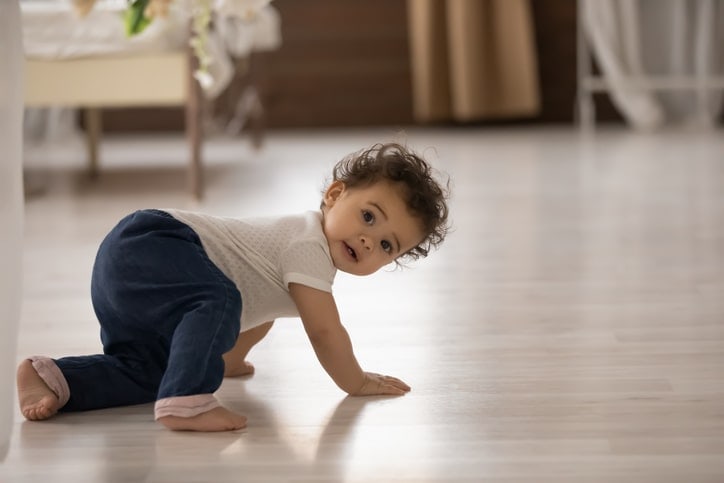
When Do Babies Crawl: A Comprehensive Guide for Parents
Crawling is a significant developmental milestone for babies, marking their newfound mobility and independence. It’s a crucial stage that lays the foundation for future physical and cognitive skills. Understanding when babies typically crawl and the factors that influence this milestone can help parents provide optimal support and encouragement.
Average Crawling Age
The average age at which babies start crawling varies, but most do so between 6 and 10 months. Some babies may crawl as early as 4 months, while others may take up to 12 months. It’s important to remember that every baby develops at their own pace, and there is no need for concern if your baby falls outside this range.
Factors Influencing Crawling Age
Several factors can influence the age at which a baby starts crawling:
- Physical Development: Babies need strong neck, back, and leg muscles to crawl. Some babies develop these muscles faster than others, leading to earlier crawling.
- Temperament: Active and curious babies tend to crawl earlier than those who are more laid-back.
- Environment: Babies who are given plenty of floor time and opportunities to explore their surroundings are more likely to crawl sooner.
- Birth Order: First-born babies often crawl earlier than subsequent siblings due to increased parental attention and stimulation.
- Health Conditions: Babies with certain health conditions, such as cerebral palsy or Down syndrome, may experience delays in crawling.
Signs of Crawling Readiness
Before babies start crawling, they typically exhibit certain signs of readiness:
- Rolling Over: Babies who can roll over from back to tummy and vice versa are developing the core strength necessary for crawling.
- Scooting: Babies may start scooting on their bellies or pushing themselves forward with their feet before crawling.
- Pulling Up: Babies who can pull themselves up to a standing position are strengthening their leg muscles and preparing for crawling.
- Rocking: Babies may rock back and forth on their hands and knees, practicing the motion of crawling.
Encouraging Crawling
Parents can play a vital role in encouraging their babies to crawl:
- Provide Floor Time: Give your baby ample time to explore the floor on their tummy. This helps strengthen their muscles and develop their crawling skills.
- Create a Safe Environment: Ensure the floor is clear of obstacles and hazards that could hinder your baby’s crawling.
- Use Toys as Motivation: Place toys just out of your baby’s reach to encourage them to crawl towards them.
- Support and Assist: If your baby struggles to crawl, gently support them by holding their hands or feet.
- Avoid Walkers and Bouncers: While these devices may seem helpful, they can delay crawling by limiting your baby’s floor time and muscle development.
When to Seek Professional Help
If your baby is significantly delayed in crawling (e.g., not crawling by 12 months), it’s important to consult with a healthcare professional. They can assess your baby’s development and rule out any underlying health conditions that may be affecting their crawling ability.
Benefits of Crawling
Crawling provides numerous benefits for babies:
- Physical Development: Crawling strengthens muscles, improves coordination, and enhances balance.
- Cognitive Development: Crawling promotes spatial awareness, problem-solving skills, and hand-eye coordination.
- Independence: Crawling gives babies a sense of freedom and allows them to explore their surroundings.
- Social Development: Crawling helps babies interact with others and develop social skills.
Conclusion
Crawling is a crucial developmental milestone that typically occurs between 6 and 10 months. While the exact age varies, understanding the factors that influence crawling and providing appropriate support can help parents foster their baby’s mobility and overall development. If your baby is significantly delayed in crawling, it’s important to seek professional guidance to rule out any underlying health conditions. Remember, every baby develops at their own pace, and crawling is just one of many exciting milestones to come.
